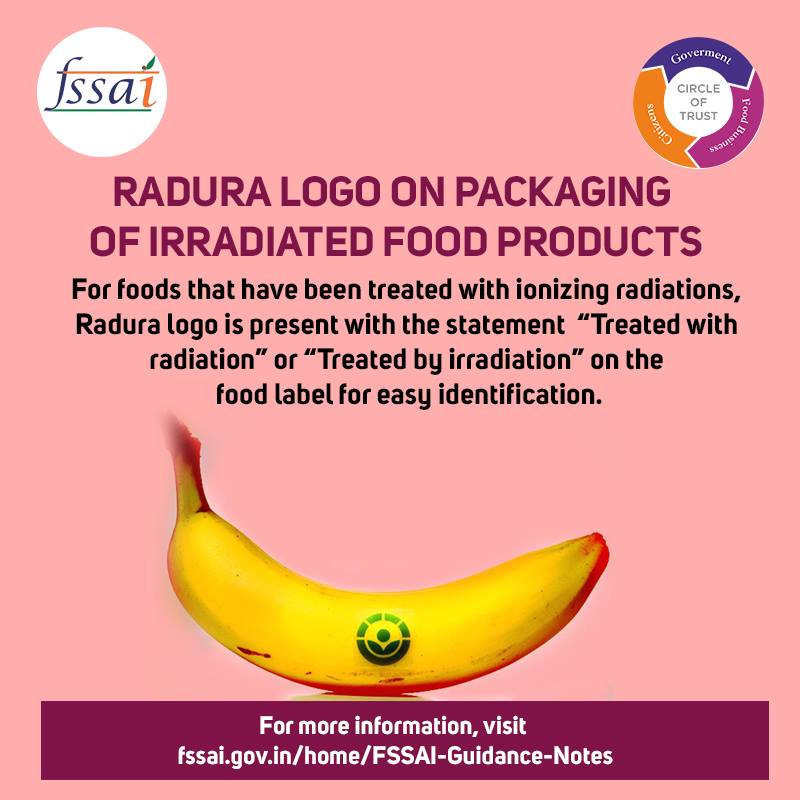Our shopping habits have undergone a considerable change over the years.
Not too long ago, we would purchase vegetables and fruits off the hand cart that did the rounds in the society, but today, ordering them online has become a hassle-free option.
But whether we acquire them from a trusted vegetable vendor every morning or the weekly farmers’ market, we will always be curious about where these essentials come from, what chemicals have been sprayed on them, whether they are organic as they claim to be and what safety measures one must take before consuming them.
Addressing one such concern, the Food Safety & Standards Authority of India (FSSAI) has issued a statement saying that food products that have been treated with ionising radiation must be marked.
Here are eight things you must know about the ionising radiation process and the marker that you must look out for a while buying irradiated products.
1. According to the latest statement issued by the FSSAI, all food products that have undergone irradiation must carry the ‘Radura’ mark along with the tag ‘treated with radiation’ or ‘treated by irradiation.’
Radura is an international symbol, usually green in colour and resembling a plant in a circle.

2. The process of irradiation includes exposing food products such as fruits and vegetables to ionising radiation like gamma rays, X-rays or electron beams to achieve certain technological objectives.
The FSSAI says that these objectives “include [an] extension of shelf-life, destruction of storage and quarantine insect pests, and killing of parasites, pathogens, and spoilage microorganisms.”
3. Based on the requirements (as per dosage), the applications of food irradiation can be classified as low dose, medium dose, and high dose.
You may also like: No More Old Newspapers, Waste Plastic for Food Packaging: FSSAI Issues New Rules
4. As compared to chemicals and fumigants, irradiation is much more effective and does not leave any harmful residue in food. It is equally suitable for both bulk as well as pre-packaged food and is a physical, non-additive process that causes minimal change in it.
5. Several misconceptions about the process have made consumers wary of irradiated food products.
However, the FSSAI assures that this is a safe process that “have inbuilt safety features that prevent human exposure to radiation.”
6. Currently, food irradiation is permitted in over 60 countries including the USA and China. Apart from fruits and vegetables, spices, dry vegetable seasonings, meat, meat products, herbs, and herbal products are the major commodity groups where this technology is used.
7. Several international entities, including the World Health Organisation (WHO), have clarified the misconceptions that may occur with consumers or even policymakers.
“At high energy levels, ionising radiation can make certain constituents of the food radioactive. Below a certain threshold of energy, however, these reactions do not occur. On the basis of experimental studies and theoretical estimates, in 1980, the Joint FAO/IAEA/WHO Expert Committee on the Wholesomeness of Irradiated Foods recommended restricting the radiation sources used in food processing to those with energy levels well below those that induce radioactivity in treated food,” observes the WHO.
You may also like: Fssai Introduces Restrictions on Reusing Cooking Oil: Tips to Be Healthy at Home
8. To clarify the difference between irradiation and radioactive food further, FSSAI says, “Radiation processed foods are those that have been exposed to radiation to bring about the desired technological benefits. Radioactive foods, on the other hand, are those that become contaminated with radionuclides, for example during nuclear accidents. Contamination with radionuclides never occurs during radiation processing.”
The FSSAI guarantees that this process causes no harm to the consumer. To ensure that people are well informed about what processes the food they purchase has undergone, they have made it mandatory to have the Radura mark and tag on the products.
So the next time you are out buying groceries, make sure you look out for the sticker.
(Edited by Gayatri Mishra)
Like this story? Or have something to share? Write to us: contact@thebetterindia.com, or connect with us on Facebook and Twitter.
If you found our stories insightful, informative, or even just enjoyable, we invite you to consider making a voluntary payment to support the work we do at The Better India. Your contribution helps us continue producing quality content that educates, inspires, and drives positive change.
Choose one of the payment options below for your contribution-
By paying for the stories you value, you directly contribute to sustaining our efforts focused on making a difference in the world. Together, let's ensure that impactful stories continue to be told and shared, enriching lives and communities alike.
Thank you for your support. Here are some frequently asked questions you might find helpful to know why you are contributing?

